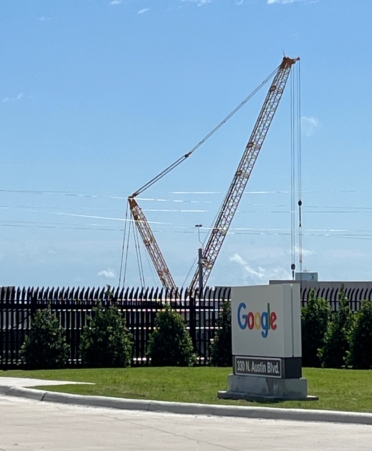(WACO, Texas) – Data centers are sprouting up on the Texas landscape like its cherished bluebonnets.
Texas has more than 270 data centers, according to the Texas Comptroller of Public Accounts. Many of these are located in the Austin, Dallas-Fort Worth and San Antonio areas. New data center projects have been announced in recent months in Abilene, Red Oak and San Marcos.
Joel Pacheco, director of marketing and sales at MDC Data Centers in McAllen, is quick to say that some people can mistake data centers for call centers. Data centers disseminate, manage and store technical information and can be focused on artificial intelligence, cloud storage, managed services, or organizations. Call centers are for communication and customer service for marketing or sales.
“They are extremely high-value properties and are good contributors to the tax base,” said John Knight, assistant director of economic development for the Red Oak Economic Development Corp. “They do not have large employment compared to the space they take up. The jobs they have are very good with good wages.”
Knight said what keeps companies like DataBank and Google interested in locating data centers in Red Oak is availability of high-powered electrical infrastructure provided by Oncor.
“The good news is when you have a data center, they actually build reliability and sustainability into your electrical infrastructure,” he said. “They build substations to serve their projects, so in many cases you are getting upgrades to your electrical power systems.”
Knight said four projects totaling 24 buildings are planned for Red Oak, for now. This means new opportunities for people wanting to work in construction, electrical construction, industrial maintenance and other fields.
“We are going to have continued construction for a pretty extended period of time,” Knight said. “Once it is done, the estimated value of the projects is $13 billion. It is going to dramatically change our tax base. It will allow us to do quality-of-life things for our citizens. They continue to be high-paying wages.”
MDC Data Centers focus on interconnection, with customers in Mexico and the United States. The company has facilities in California, Texas and Mexico.
“We help the networks that make up the internet,” Pacheco said. “We help connect them to form a global network.”
Pacheco said the type and scale of a data center will determine the number of employees needed.
“I think the whole industry has had a shortage of qualified personnel,” he said. “In our case, it is connecting networks. We need the fiber infrastructure and for the fiber to be underground. You need crews to build fiber, and you need specialized people to splice fiber.”
Pacheco said it is not uncommon for technicians from as far away as San Antonio to travel to the Rio Grande Valley to fix issues.
“In the Valley, McAllen, Brownsville, you can find the same people,” he said. “It can be the same person working for seven companies.”
Texas State Technical College recently formed a Data Center Task Force made up of representatives of some of its campuses to assess the workforce needs of the state’s budding data center industry. Subcommittees will research career potential in construction, facility maintenance, information technology and power generation. The gathered information will be used to guide the college in curriculum development, to support strategic partnerships, and to examine workforce training opportunities.
Lance Lucas, director of alignment for TSTC’s statewide HVAC Technology program, said cybersecurity and HVAC workforce training is being developed for Compass Datacenters employees in the Dallas-Fort Worth area.
Lucas said data centers may employ their own HVAC maintenance staff but also have the option of using third-party companies to do troubleshooting and repair work.
“We are used to doing comfort cooling,” Lucas said. “The servers like their temperature between 65 and 70 degrees year-round. The equipment is meant to cool all the servers. They have separate units. This is strictly for cooling the servers. There are racks and racks of servers with hot racks and cool racks.”
TSTC’s Electrical Power and Controls program produces graduates who know the complex energy needs that facilities like data centers have, along with the controls aspect through programmable logic controllers and AC/DC drives.
“Electrical Power and Controls covers electrical distribution, which is the bringing of power from its source to the individual utilization devices,” said Richard Filut, director of alignment for TSTC’s statewide Electrical Power and Controls program. “In data centers, these utilization devices are anything from the lighting, power, HVAC, CRAC (computer room air conditioning) units to the server racks themselves.”
People in the plumbing industry are needed to install and maintain floor drains and trap seals and fix issues when leak detectors signal that there is excess moisture.
Jacob Usery, director of alignment for TSTC’s statewide Computer Networking and Systems Administration programs, said data center technology fits with what students are learning in the program. He said a new course, Network Troubleshooting and Support, will be added to the program’s hybrid and online curriculum this fall and will focus on soft skills with communication and workflow ticketing systems.
“In networking, every day may be a new problem,” Usery said. “People interested in gaming, that like solving puzzles, that like something interesting and different day in and day out, are attracted to what we do.”
For more information on TSTC, go to tstc.edu.
